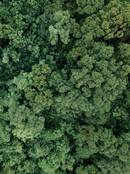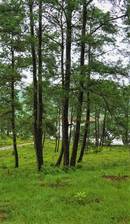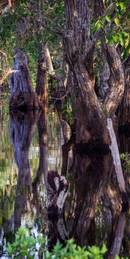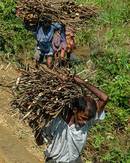Nouvelles

En octobre 2018, les Programmes internationaux du Service forestier des États-Unis, en partenariat avec l’Organisation des Nations Unies pour l’alimentation et l’agriculture, ont organisé une formation de quatre jours en probabilités et statistiques. Ce stage a été soutenu par le programme SilvaCarbon, un programme interinstitutionnel de coopération technique du gouvernement américain qui vise à renforcer les capacités en matière de mesure, de suivi et de notification des données relatives au carbone terrestre. La formation était destinée aux techniciens d’inventaire forestier du Département des inventaires et du zonage forestier de la République démocratique du Congo, pays qui renferme, selon les estimations,...

More and more countries agree that sharing lessons learned, especially on such a complex subject as GHG inventory is crucial for strengthening countries' technical and institutional capacities to progress in reporting to the United Nations Framework Convention on Climate Change (UNFCCC) and follow-up on the commitments of the Paris Agreement.
The "Mesoamerican workshop to exchange knowledge in the reporting and verification of emissions from agriculture" was held in the city of Tegucigalpa, Honduras, from 3 to 7 December 2018. The face-to-face workshop complimented the work plan in South-South Cooperation in Forest Monitoring of the Mesoamerican Environmental Sustainability Strategy (Estrategia mesoamericana de sustentabilidad...

Myanmar has the highest proportion of forest cover in mainland Southeast Asia. According to the Global Forest Resources Assessment 2015 published by the Food and Agriculture Organization (FAO), 44.2% of the country’s territory is covered with forests. A considerable part of these forests is still relatively intact, hosting exceptional biodiversity, including fishing cats, sun bears, dholes, binturongs, pangolins, and more than 1,000 bird species. Moreover, an estimated 70% of the country’s population is living in rural areas and heavily dependent on forests for their basic needs.
To protect the country’s natural wealth and at the same time fulfil various national and...
Equipped with knowledge. Discussing the protection of one of the world's largest carbon hotspots
22/12/2018
22/12/2018

Peatlands are lands with a naturally accumulated plant layer on their surface, stored by the high water level. Peatland ecosystems store great amounts of carbon and have therefore become a centre of attention for climate change mitigation. Although not all peat locations are known and mapped, peatlands are estimated to contain 30 per cent of the world’s soil carbon even though they only cover 3 per cent of the Earth’s land area. In addition to storing organic matter, peatlands provide a wide range of ecosystem services.
Over 180 countries have peatlands, including in diverse climatic areas like highlands, drylands, coastal areas, river...

Through many years of experience and country examples, we have learned that data on forest ecosystems is crucial for forest-related decision-making at the local and national level. National Forest Monitoring Systems (NFMS) are important for countries to be able to monitor and report on national goals and international targets, such as carbon and biomass in forests.
These systems are increasingly used to collect data to identify and address national priorities, including migration and the use of natural resources surrounding the camps of refugees and internally displaced persons (IDPs). One of the recent examples of NFMS’ multipurpose character is the contribution to the Safe Access...

